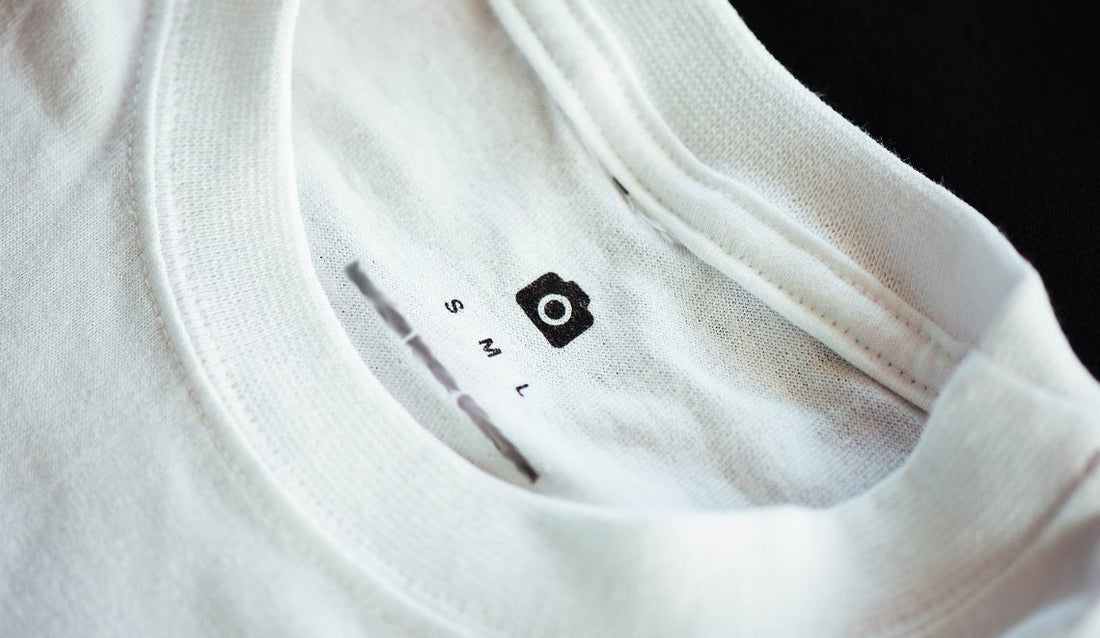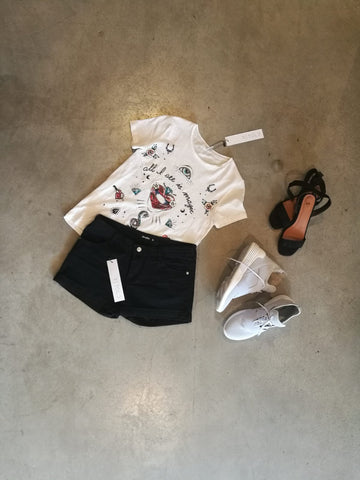
Fast fashion’s furious pace has normalised the almost-daily habit of shopping. Whether you nip to the mall to browse the latest trends, or pull up your favourite fashion website and throw a few items into your basket (and then relive the joy of purchasing when they arrive on your doorstep). Fashion is more accessible than it’s ever been. But do ever consider the impact your wardrobe has had on the environment? Do you truly understand where your items come from?
Globally, we buy 2 billion t-shirts annually, making it one of the most common garments in the world. A staple in every wardrobe, we have done a little research into the journey of the common cotton t-shirt from seed to shop shelf and here’s what we found:

[Photo by chuttersnap on Unsplash]
Cotton garments start their lives in farms across America, India or China, where the majority of cotton crops are grown. As one of the thirstiest crops it uses a staggering 2,700 litres of water to produce one tshirt's-worth of cotton; that’s equivalent to 30 bathtubs of water...for one t-shirt! Wow.
In regular cotton plantations, a high amount of insecticides and pesticides are used on the crop which can be a carcinogenic and effect the workers, the environment and wildlife. In fact, cotton uses more insecticides and pesticides than any other crop in the world. Sadly, organic cotton which uses no harmful chemicals amounts to less than 1% of the 27million metric tonnes of cotton produced each year, so is still just a tiny fraction.
Once the crop is ready, self driving machines harvest the cotton bolls (Boston Lane cafe uses these raw cotton stalks in their table vases… I know because I'm currently enjoying a coffee and a delicious rainbow cheddar toastie here, while I'm researching the journey of cotton), from here it goes through another machine which separates the bolls from their stalks and then the cotton is pressed into large bails. From here it is transported to a factory, usually in India or China that will blend, card, comb, pull, stretch and twist the cotton into slivers that can then be milled into sheets of cotton material which is grey and rough. This fabric is treated with industrial bleaches and chemicals so the fabric turns soft and white. Chemical dyes are added to create vivid colours - what is crazy is that some of these dyes contain more chemicals and toxins that are carcinogenic; known to cause cancer! Any toxic chemicals that are released into waterways (PLEASE check out the River Blue movie, if you haven’t already), pollute and contaminate rivers and oceans. Until this point, the process has been machine led and has not needed human hands, but as you can see - we haven't even made a t-shirt yet!

[Photo by Parker Burchfield on Unsplash]
The processed and dyed fabric is then transported to factories in Bangladesh, China, India or Turkey increasing its carbon footprint further - where machines cannot do what humans can for the intricate work of stitching the t-shirts together. Bangladesh alone employs 4.5 million people in the t-shirt industry and is the biggest producer of cotton t-shirts. The average worker in Bangladesh is paid less than USD68 per month, which is less than 250AED. How often do you go through a typical day in Dubai without spending that much? But with wages this low, you can see why some high-street brands can sell the t-shirts for as little as 50AED and still make a profit.
From the factories, the t-shirts are shipped to the distributors, normally in high income countries, so require ship, train or truck to get there further contributing to the garments' carbon footprint. 10% of global carbon emissions come from the fashion industry, which is a $3 trillion per year industry making it the second dirtiest behind oil.
But we’re still not done yet because after the t-shirt has been taken home by the consumer, it enters it’s most resource intensive part of its life. The average American household uses 16,000 gallons of water a year doing their laundry, which is over 400 washes. Tumble dryers use about 6 times more energy than washing machines, so the energy consumption is immense especially if you wash AND machine dry your laundry.
It’s fair to say that there’s a lot more that goes into producing one item of clothing than you ever imagined. A huge amount of precious resources are used, a huge amount of damage is caused and all for a few wears of a simple white cotton t-shirt.
So, what can we do? There's lots of ways we can work towards reducing the fashion industry's impact on the environment, but it will take EVERYONE to make big changes - this includes suppliers and producers. As a consumer, you have a voice, if you make sure you shop smarter, together we will show suppliers what we want.
There are some immediate (and small) steps you can take:
- Don’t buy fast fashion t-shirts that will only last a few wears - you know the ones, the cheap t-shirts that lose their shape after one wear or wash!
- Buy second-hand - that's right, visit RETOLD to pick up quality pre-owned pieces to extend their lifespan.
- Buy organic cotton - together let's let suppliers know that we WANT organic cotton, and that they need to increase the 1%
- Buy locally grown and handmade garments (if possible) - this is difficult here in the UAE, but there are certainly some brands making waves. Keep an eye on our blog as we'll soon cover these brands!
- Look after your clothes better to help them last longer - store them well, and mend any small damage.
- Wash items less - do you chuck it in the wash even if you've barely worn it? Did you know that a good pair of jeans can be worn FIVE times before needing a wash, and they are better suited to a COLD wash (which is great because it uses less energy!)
- Line dry items - let's face it, in the UAE climate, you should be line drying everything!
But it's not all doom and gloom - we've styled some of our favourite cotton t-shirts currently in stock:





